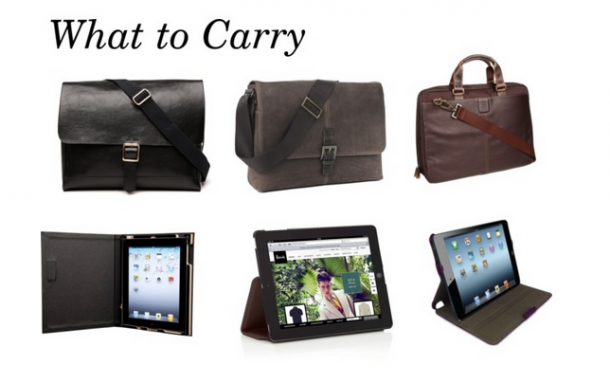
Scored an interview? Sweet! But don’t pull out that black suit and striped tie just yet: Just like there’s a wide range of what people wear to the office, there’s actually a lot of variation in what will make a great impression at your interview.
To learn more, we sat down with Ryan Kahn, career coach, founder of The Hired Group, and star of MTV’s HIRED!, who helps candidates land gigs everywhere from top entertainment companies to boutique communications firm. So, guys (or ladies with a guy in your life), read on for what you need to know about interview attire wherever you’re headed. (And ladies—we’ve got you covered, too.)
What are some basic ground rules for interview attire?
First and most importantly, you need to understand the company culture. There’s so much difference in what people wear to the office, so get a good grasp of that that so that you’re showing up in the right outfit. For example, if you’re interviewing for a position with a finance company in New York, you’re going to be wearing a suit and tie—but show up to a cool startup company in San Francisco wearing that, and they’re never going to hire you.
A couple ways you can figure this out: If you have a contact or friend who works at that company, see if he can give you a heads up as to what people wear. If you don’t have that luxury, hang out in front of the office—sit in a coffee shop across the street and try to get a glimpse at what people are wearing. Or even call the front desk or receptionist and ask: “I have an interview with you guys next week. I don’t want to seem too overdressed or too underdressed—typically, what’s the office attire there?” And then from there you can dress appropriately.
It’s always good to err on the side of conservative. You’re not going in there to work, you’re going in to interview—so dress up a bit from what people are wearing day-to-day.
Let’s go through a few scenarios. First, what should you wear at a very conservative office—like a bank or law firm?
Think conservative and classic: You want to make sure you’re going with your very textbook suit. Colors that are traditional—blues, blacks, greys—and a suit that’s a classic style. Go get a good shoe shining, and make sure your suit has been well-pressed or ironed so that it’s looking as sharp as possible.
Tailoring is really important, too—you want a modern fit. What happens a lot is that people have their “interviewing outfit” that’s been sitting in their closet for the past couple of years, and they dust it off for the occasion—you don’t want to be that guy. Get something that’s going to be really sharp and isn’t going to look dated.

How about business casual?
This is where you doing to have a lot more freedom. It depends on how casual the office may be—it could mean slacks and a button-down, or if it’s a jeans-and-shirt kind of place, you may want to wear jeans and pair them with a dress shirt and jacket, just no tie. Another look is going with the vest and tie, maybe the sleeves rolled up so it’s a bit more casual. With casual companies, jeans are perfectly fine, you just want to dress them up.

And finally, what about at startups, when everyone else is rolling in wearing t-shirts and hoodies?
Yeah, that can definitely be tricky! You want to fit in and show that you get the company culture, but there are ways you can still look professional while dressing down. Maybe a collared shirt with a hoodie on top of that, or a collared shirt with a vest and the top button undone. And definitely go with the jeans. You also still want to have closed-toe shoes—just a pair of basic black or brown shoes is the way to go. “Casual chic” would be the term—something that would fit right in, but that’s dressed up from that casual look.

What about briefcases or bags—what should guys carry?
Bringing in a bag is perfectly fine—a leather over-the-shoulder bag is great. Stay away from backpacks or anything that could look a little unprofessional. Just like you’re putting your attention into your outfit, be sure that your bag looks great, too.
But I think the thing right now is to bring in your iPad—if you have samples of your work, or references, or different things that you want to show or present at the interview, you have them right there on your tablet.

And that brings us to accessories—what about jewelry, watches and the like?
You do want to show a sense of your personal style, but you also want to keep it conservative—even if you’re going with a startup company, you want to tone it down a bit. Jewelry is totally OK, just make sure that it’s not distracting, not jingling or anything like that.
Also, a lot of times I see guys run in from the street or from the car, and they’re wearing sunglasses, and they put them on top of their head. Don’t. Put them away or leave them in the car—it looks a bit sloppy if you’re running in with sunglasses.
And finally—you always hear the advice to cover up piercings and tattoos, but that’s not universally true! If you’re going for that suit-and-tie kind of job, you’re going to want to have them covered. But otherwise, wear the tongue ring into the interview if that’s part of your sense of style. Because, a couple months from now after you get the job, you’re going to want to wear your tongue ring or have your tattoo showing, and it’s just going to cause a problem later. Again, it’s all a matter of understanding the company culture.